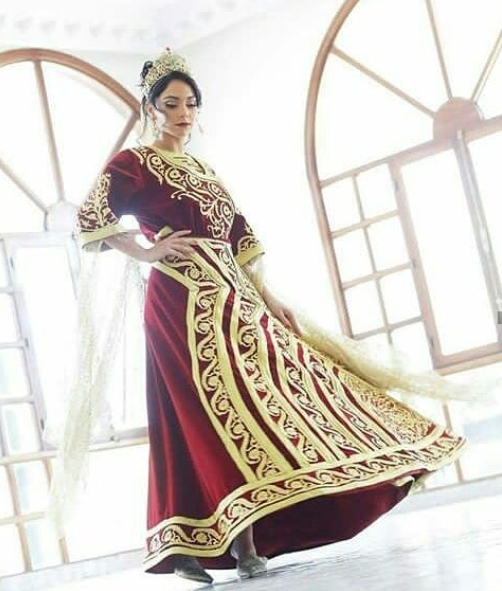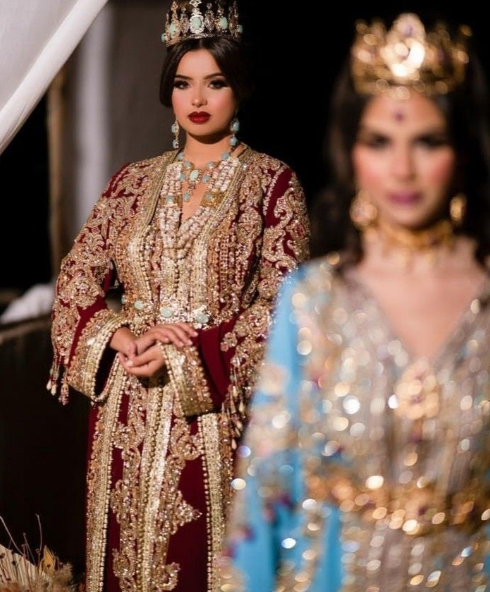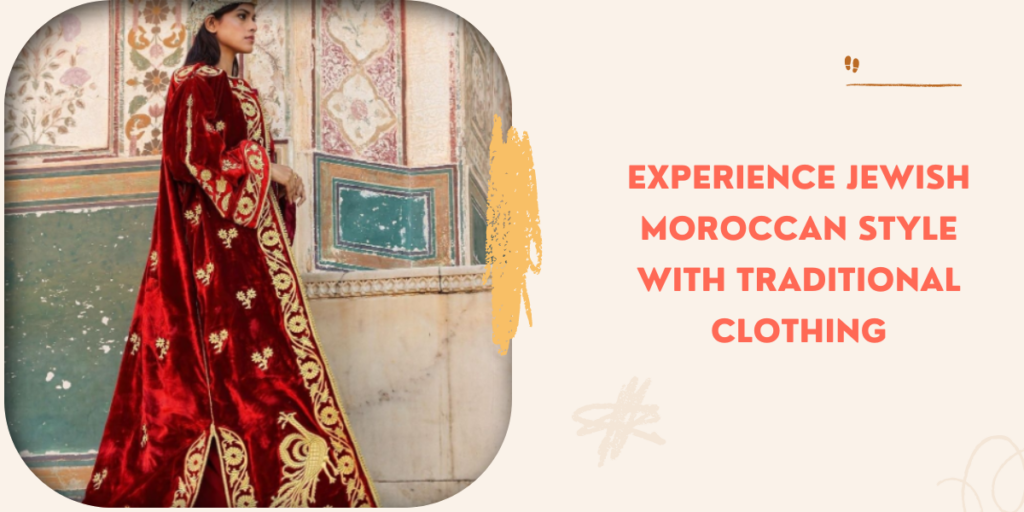Jewish Moroccan culture is a fascinating blend of Jewish and North African traditions. From its colorful architecture to its flavorful cuisine, Morocco is a feast for the senses. One aspect of this culture that stands out is its traditional clothing. In this article, we will delve into the history, styles, and significance of Jewish Moroccan clothing. Whether you are a fashion enthusiast or a cultural traveler, this article will offer you an in-depth understanding of this rich and vibrant tradition.
History Of Jewish Moroccan Clothing
The history of Jewish Moroccan clothing is intertwined with the influence of Islamic and Berber cultures. Over the centuries, Moroccan Jews have adapted their clothing styles to reflect the dominant cultural and religious trends of the time.
During the medieval period, Moroccan Jews wore clothing that was heavily influenced by Islamic and Andalusian styles. This included long, flowing robes and turbans for men, and intricately embroidered dresses and veils for women.
As time went on, Moroccan Jewish clothing began to incorporate elements of Berber culture, such as the use of bright colors and geometric patterns. Specific colors and fabrics also held significant meaning in Jewish Moroccan clothing. For example, blue was often used to symbolize protection against the evil eye, while red was associated with prosperity and fertility.
In the late 19th and early 20th centuries, Western influence began to make its mark on Moroccan Jewish clothing. European-style suits and dresses became popular among urban Jews, while traditional clothing continued to be worn in rural areas.
Despite these changes, traditional Jewish Moroccan clothing remains an important part of the country’s cultural heritage. Many Jews continue to wear traditional clothing on special occasions and religious holidays, and the designs and patterns of Moroccan Jewish clothing continue to inspire contemporary fashion designers.
Traditional Jewish Moroccan Clothing For Men
The traditional clothing for Jewish Moroccan men includes the “djellaba” and “jabadour.” The djellaba is a long, loose-fitting robe that is worn over regular clothing. It is typically made from wool or cotton and is available in various colors, though the most common color is white. The jabadour is a type of vest worn underneath the djellaba, which can also be made from wool or cotton and features intricate embroidery and patterns.
Embroidery and patterns play an essential role in Jewish Moroccan men’s clothing. The intricate designs are often hand-stitched onto the garments using colorful threads, adding a touch of elegance and distinction to traditional clothing. Traditional accessories, such as the “tarbouche” (a red hat made of felt) and “babouches” (slippers made of leather or fabric), complete the look.

Traditional Jewish Moroccan Clothing For Women
The traditional clothing for Jewish Moroccan women includes the “caftan” and “takchita.” The caftan is a long, flowing dress that is typically made from silk, satin, or other luxurious fabrics. It features intricate embroidery, beading, and other embellishments, making it a true work of art. The takchita is a layered dress consisting of a caftan worn over a second, shorter dress.
In addition to the traditional clothing, women also use jewelry and henna tattoos to add to the beauty of the attire. Jewelry such as necklaces, bracelets, and earrings are often made from gold or silver and may feature precious stones. Henna tattoos, which are temporary tattoos made from henna paste, are applied to the hands and feet and are considered an essential part of traditional Moroccan wedding attire.
The hijab and khimar, which are types of head coverings, also play a significant role in Jewish Moroccan women’s clothing. The hijab is a simple headscarf that covers the head and neck, while the khimar is a full-body veil that covers the head, neck, and shoulders, leaving only the face exposed. These coverings reflect the cultural and religious traditions of Moroccan Jewish women and add to the elegance and beauty of the traditional clothing.
Modern Interpretations Of Jewish Moroccan Clothing
As with any other cultural tradition, Jewish Moroccan clothing has evolved over time. Today, modern interpretations of traditional clothing can be seen in the fashion world. These modern designs incorporate elements of Western fashion while also preserving the unique cultural identity of Jewish Moroccan clothing.
One notable influence on modern Jewish Moroccan fashion is Western fashion. Many modern designers incorporate Western styles and techniques, such as tailoring and modern cuts, into their designs. However, they also preserve the traditional fabrics, patterns, and colors that are characteristic of Jewish Moroccan clothing.
Contemporary Jewish Moroccan fashion designers also make use of traditional fabrics and patterns in their designs. Fabrics like silk, satin, and brocade, are still used to create modern kaftans, takchitas, and djellabas. These traditional fabrics, combined with intricate embroidery and patterns, create stunning pieces that reflect the beauty of Moroccan culture.
Some of the most prominent modern Jewish Moroccan fashion designers include Albert Oiknine, Jean-Claude Cohen, and Yves Saint Laurent. These designers have created stunning collections that showcase the beauty and uniqueness of Jewish Moroccan clothing. Their designs have been featured on runways around the world, bringing Jewish Moroccan fashion to a global audience.
Where To Experience Jewish Moroccan Style
- Jewish Museum of Casablanca
This museum showcases the history and culture of Jewish Moroccans, including their traditional clothing. You’ll see exhibits of kaftans, djellabas, and other clothing items, along with displays of jewelry, embroidery, and other traditional crafts.
- Jewish Mellahs in Marrakech and Fes
The mellahs, or Jewish quarters, in Marrakech and Fes offer a unique opportunity to experience Jewish Moroccan culture. You’ll find markets selling traditional clothing, jewelry, and other crafts, as well as synagogues and other historic sites.
- Jewish Heritage Tours in Morocco
There are several tour companies that specialize in Jewish heritage tours of Morocco. These tours typically include visits to historic synagogues, museums, and other cultural sites, as well as opportunities to experience traditional Moroccan cuisine and clothing.

Conclusion
Moroccan traditional clothing is an important part of Jewish Moroccan culture. It reflects the history, values, and traditions of this unique community. Through the use of traditional fabrics, colors, and patterns, Jewish Moroccans have created clothing that is both beautiful and meaningful.
If you’re interested in experiencing Jewish Moroccan style for yourself, there are several places you can visit, including the Jewish Museum of Casablanca, the Jewish Mellahs in Marrakech and Fes, and Jewish heritage tours of Morocco. By experiencing this cultural tradition firsthand, you’ll gain a deeper appreciation for the beauty and significance of Jewish Moroccan clothing.
FAQs
Q1: What is Jewish Moroccan style?
Jewish Moroccan style refers to the traditional clothing worn by Jewish Moroccans, which reflects the fusion of Jewish, Islamic, and Berber cultures. It includes intricate designs, bright colors, and unique patterns that have evolved over centuries. Both men and women wear distinct clothing items, such as the djellaba, jabadour, caftan, and takchita. Modern interpretations of Jewish Moroccan style have also emerged, influenced by Western fashion, but still incorporating traditional fabrics and patterns. Experiencing Jewish Moroccan style can be done through visiting museums, mellahs, and participating in heritage tours in Morocco.
Q2: What are some common types of traditional clothing in Jewish Moroccan style?
Some common types of traditional clothing in Jewish Moroccan style include the djellaba and jabadour for men, and the caftan and takchita for women. These garments are often adorned with intricate embroidery and patterns, and are made with traditional fabrics such as silk and wool. Accessories like the tarbouche and babouches are also commonly worn with these outfits. The hijab and khimar are significant items for women’s attire, and jewelry and henna tattoos are often used to complement the look.
Q3: What materials are used to make traditional Jewish Moroccan clothing?
Traditional Jewish Moroccan clothing is typically made from natural materials such as cotton, silk, and wool. These materials are lightweight, breathable, and comfortable to wear in the hot Moroccan climate.Traditional Jewish Moroccan clothing is typically made from a variety of materials, including cotton, silk, and wool. The quality and type of fabric used can vary depending on the purpose of the garment and the wearer’s social status. For example, wealthier individuals may wear clothing made from more expensive fabrics, such as brocade or velvet, while simpler garments may be made from cotton or wool. Additionally, traditional Moroccan clothing often features intricate embroidery and beading, further enhancing the beauty and cultural significance of these garments.
Q4: How is traditional Jewish Moroccan clothing worn?
Traditional Jewish Moroccan clothing is worn differently by men and women. Men wear the djellaba or jabadour, often accessorized with a tarbouche (fez hat) and babouches (leather slippers). Women wear the caftan or takchita, often adorned with intricate embroidery and jewelry, along with a hijab or khimar to cover their hair. Henna tattoos are also commonly used to decorate hands and feet.
Q5: Where can I find traditional Jewish Moroccan clothing?
Traditional Jewish Moroccan clothing can be found in various places, including local markets or souks in cities like Marrakech and Fes. Many cities in Morocco also have Jewish Mellahs, which are historic Jewish quarters, where one can find traditional clothing and other Jewish-Moroccan cultural items. Additionally, there are several Jewish heritage tours in Morocco that offer opportunities to learn about and experience traditional Jewish Moroccan culture, including clothing. The Jewish Museum of Casablanca is another place to see traditional clothing and artifacts on display.
